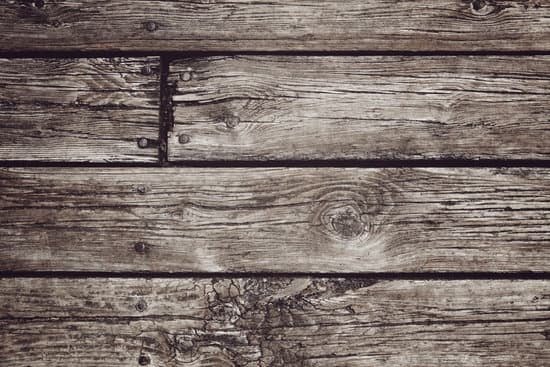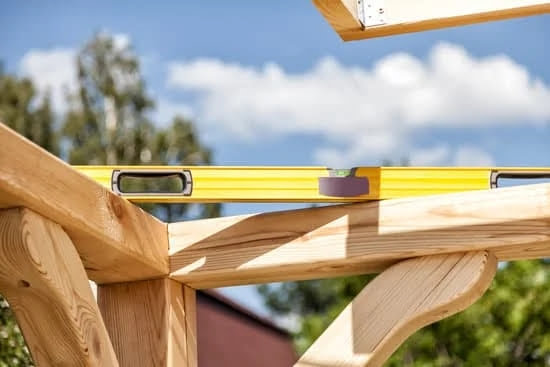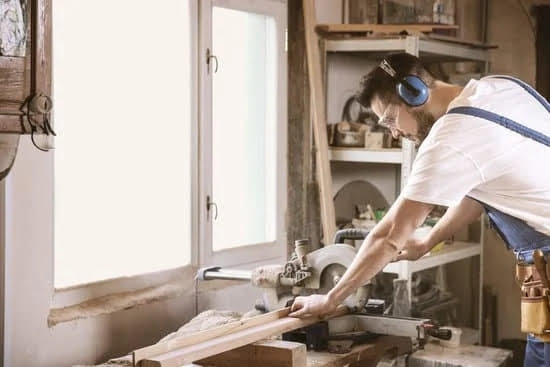Woodworking is a timeless craft that involves shaping and creating wooden objects using various tools and techniques. One of the most essential hand tools in woodworking is the plane. What does a plane do in woodwork, you may ask? A plane is used to smooth and shape wood surfaces, making it an indispensable tool in achieving precision and finesse in woodworking projects.
From its humble beginnings to its modern-day adaptations, wood planes have a rich history that dates back centuries. Understanding the evolution of these tools gives insight into the craftsmanship passed down through generations. Different types of planes serve specific functions in woodworking, ranging from smoothing rough surfaces to creating intricate profiles on wood pieces.
The anatomy of a plane consists of several components that work together to provide optimal results. Knowing how each part contributes to the overall function of the tool is crucial in mastering its use. Proper maintenance and care are vital to ensure the longevity of a plane, allowing woodworkers to continue producing high-quality pieces for years to come.
History of Wood Planes
The history of wood planes is deeply rooted in the evolution of woodworking as a craft. The concept of using a plane to smooth wood dates back to ancient times, with evidence of hand tools similar to planes found in archaeological sites around the world. These early planes were simple in design, often made from a single piece of wood with a sharpened blade attached.
As woodworking techniques advanced, so did the design of wood planes. In the 17th and 18th centuries, skilled craftsmen began producing more sophisticated planes with adjustable blades and ergonomic handles for better control. The Industrial Revolution brought about mass production, making wood planes more accessible to a wider range of woodworkers.
Today, modern advancements in technology have led to the production of high-quality metal planes that offer precision and durability. Despite these innovations, many craftsmen still prefer working with traditional wooden planes for their craftsmanship and connection to woodworking history. Whether you are a seasoned professional or just starting out in woodworking, understanding the history of wood planes can provide valuable insight into the importance of hand tools in this timeless craft.
| Wood Plane Evolution | Key Features |
|---|---|
| Ancient Times | Simple design made from single piece of wood |
| 17th-18th Centuries | Adjustable blades and ergonomic handles introduced |
| Modern Times | High-quality metal planes with precision and durability |
Types of Planes
Woodworking involves the use of various tools to shape, carve, and craft wood into beautiful and functional pieces. One essential tool in a woodworker’s arsenal is the plane. But what does a plane do in woodworking? A plane is a hand tool used to smooth and shape wood by shaving off thin layers. It is crucial for creating flat surfaces, smoothing rough areas, and refining the overall finish of a woodworking project.
There are several types of planes used in woodworking, each designed for specific functions. One of the most common types is the bench plane, which is versatile and can perform a variety of tasks such as flattening surfaces, removing imperfections, and squaring edges.
Another type is the block plane, which is smaller in size and ideal for fine tuning joints, chamfering edges, and planing end grain. Specialty planes like the shoulder plane, router plane, and spokeshave serve more specific purposes in woodworking projects.
| Type of Plane | Function |
|---|---|
| Bench Plane | Flattening surfaces, removing imperfections, squaring edges |
| Block Plane | Fine tuning joints, chamfering edges, planing end grain |
| Shoulder Plane | Cleaning up shoulders on tenons or rabbets |
Anatomy of a Plane
Woodworking tools have been used for centuries to create beautiful and functional pieces of furniture, decorations, and more. One essential tool in woodworking is the plane, a simple yet versatile tool that helps smooth and shape wood surfaces. But what does a plane do in woodwork exactly? Let’s break down the various parts of a plane and understand how each contributes to its effectiveness.
The anatomy of a wood plane can seem intimidating at first glance, but once you understand the purpose of each part, you’ll be able to use it with ease. Here are the key components of a plane and their functions:
1. Blade: The blade, also known as the iron, is the cutting edge of the plane. It is responsible for shaving off thin layers of wood to create a smooth surface.
2. Frog: This is the part of the plane where the blade is attached. It allows you to adjust the depth at which the blade cuts into the wood.
3. Cap Iron: Also known as the chip breaker, this part sits on top of the blade and helps control tear-out by breaking up wood fibers before they can be lifted by the blade.
4. Adjusting Mechanism: This mechanism allows you to adjust how much of the blade extends from the base of the plane, regulating how deep it cuts into the wood.
5. Handle and Knob: These parts provide leverage and control while using the plane, allowing you to guide it smoothly over the surface of your workpiece.
Understanding how each part interacts with one another is crucial in effectively using a plane in woodworking projects What Does A Plane Do In Woodwork. Proper maintenance and care will ensure that your plane stays in good working condition for years to come.
How to Use a Plane
Woodworking requires not only creativity and skill but also the proper use of tools to bring a vision to life. One of the essential hand tools in woodworking is a plane, which is used to shave, smooth, and shape wood surfaces. Understanding how to use a plane correctly can make all the difference in achieving a professional finish on your projects.
Preparing the Plane
Before using a plane, it’s crucial to ensure that it is properly set up for the task at hand. This includes sharpening the blade to ensure a clean cut, adjusting the depth and angle of the blade, and ensuring that all parts of the plane are in good working condition. Taking the time to prepare your plane will make it easier to achieve smooth and precise results.
Using the Plane
When using a plane, it’s important to have a firm grip on both handles while applying even pressure as you push the tool along the wood surface. Begin by positioning the plane at one end of the wood piece and gently push it forward with steady strokes, allowing the blade to remove thin shavings with each pass. Continue planing in long strokes until you achieve your desired level of smoothness and flatness.
Checking Your Progress
Throughout the planing process, it’s essential to check your progress regularly by running your hands over the wood surface or using a straight edge or square to ensure that it remains flat and even. Adjust the blade depth as needed to remove any imperfections or high spots, taking care not to remove too much material at once. By paying attention to detail and making small adjustments along the way, you can achieve professional results with your wood plane.
Common Mistakes to Avoid
Woodworking with a hand plane can be a rewarding experience, but it also comes with its fair share of challenges. Making mistakes while using a plane is not uncommon, but being aware of these pitfalls can help woodworkers avoid them and achieve better results in their projects. Let’s take a look at some common mistakes that woodworkers make when using a plane and how they can be prevented.
Incorrect Blade Adjustment
One of the most common mistakes woodworkers make when using a plane is not properly adjusting the blade. If the blade is set too shallow, the plane will struggle to remove material efficiently, leading to rough and uneven surfaces.
On the other hand, if the blade is set too deep, it can cause tear-out and damage to the workpiece. To prevent this error, always double-check the blade adjustment before starting to plane and make small adjustments as needed throughout the process.
Not Sharpening the Blade
Another mistake that woodworkers often make is neglecting to sharpen the blade regularly. A dull blade will not only produce poor results but also require more effort to use, leading to fatigue and frustration. It is essential to keep the blade sharp by regularly sharpening it with proper tools such as sharpening stones or honing guides. A sharp blade will ensure clean and smooth cuts, making your woodworking projects more enjoyable and successful.
Ignoring Grain Direction
One critical aspect of using a plane that woodworkers sometimes overlook is paying attention to the direction of the wood grain. Planing against the grain can cause tear-out and splintering, resulting in an uneven surface finish.
To avoid this mistake, always identify the direction of the wood grain before starting to plane and work in line with it as much as possible. By following the natural direction of the grain, you can achieve smoother cuts and prevent damage to your workpiece.
Maintenance and Care
Wood planes are essential tools in woodworking, used for shaping and smoothing wood surfaces with precision. To ensure the longevity and optimal performance of your wood plane, it is crucial to properly maintain and care for it. Here are some tips on how to keep your wood plane in top condition:
- Keep the blade sharp: One of the most important maintenance tasks for a wood plane is keeping the blade sharp. A dull blade will not only produce poor results but also put unnecessary strain on the tool. Regularly sharpen the blade using a sharpening stone or other appropriate tools.
- Clean after each use: After using a wood plane, make sure to clean off any debris or sawdust that may have accumulated on the tool. This will prevent clogging and corrosion, ensuring smooth operation every time you use it.
- Store properly: When not in use, store your wood plane in a dry place away from moisture and humidity. Consider using a protective case or bag to prevent dust buildup and protect the tool from damage.
Taking good care of your wood plane not only prolongs its lifespan but also ensures consistent and high-quality results in your woodworking projects. By following these maintenance tips, you can enjoy years of efficient use out of your trusty wood plane.
Remember that proper care and maintenance of your wood plane are key to its longevity and performance. Invest time in maintaining this essential tool, and you will be rewarded with precise and smooth woodworking results every time you use it.
Expert Tips and Tricks
Woodworking is a craft that has been practiced for centuries, requiring skill, precision, and the right tools to create beautiful and functional pieces. One essential tool in woodworking is the plane, which plays a crucial role in shaping and smoothing wood. But what does a plane do in woodwork? A plane is used to shave thin layers of wood off a workpiece, creating smooth surfaces, removing imperfections, and ensuring proper fitting joints.
Seasoned woodworkers have honed their skills over years of practice and experience, mastering the art of using a plane effectively in woodworking projects. One insider tip from these experts is to always start by sharpening the blade of your plane before each use.
A sharp blade will not only make it easier to cut through the wood but will also result in cleaner and more precise cuts. Additionally, adjusting the depth of cut on your plane to match the task at hand is key to achieving the desired outcome.
Another pro tip from seasoned woodworkers is to pay attention to grain direction when using a plane. Working against the grain can result in tear-out and rough surfaces, so it’s important to follow the natural direction of the wood fibers for smoother results.
Additionally, making sure your plane is properly set up with tight fittings and adjustments will ensure optimal performance. By taking the time to correctly set up your plane before each use, you can maximize its efficiency and effectiveness in your woodworking projects.
Conclusion
In conclusion, the wood plane has a crucial role in woodworking, serving as a versatile hand tool that helps achieve precision and smoothness in shaping wood. Understanding the history of wood planes provides insight into how they have evolved over time to meet the needs of woodworkers and adapt to changing techniques.
From the basic bench plane to specialized planes like the block plane and shoulder plane, each type serves a specific function in woodworking, showcasing the ingenuity behind their design.
Learning about the anatomy of a plane is essential for woodworkers to grasp how each part contributes to its overall effectiveness in smoothing and shaping wood surfaces. Proper usage of a plane involves technique and practice, ensuring that woodworking projects turn out beautifully finished. By avoiding common mistakes like incorrect blade angles and improper sharpening techniques, woodworkers can maximize the efficiency of their planes and achieve professional results.
For those new to woodworking, trying out a hand plane can be an enriching experience that introduces them to traditional craftsmanship and the art of creating something with their own hands. With proper maintenance and care, a wood plane can last for generations, becoming an indispensable tool in any woodworker’s repertoire. So why not pick up a plane today and explore the possibilities it offers in enhancing your woodworking skills?
Frequently Asked Questions
What Is the Use of a Planer?
A planer is a woodworking tool used to create a smooth, flat surface on a piece of wood by shaving off thin layers. It helps in shaping and smoothing out rough lumber, making it easier to work with and providing a professional finish.
What Does It Mean to Plane a Piece of Wood?
To plane a piece of wood means to use a planer to remove imperfections on the surface, such as bumps or rough spots. This process results in a smoother, more uniform surface that is ideal for woodworking projects where precision and accuracy are key.
What Is the Use of Hand Plane in Carpentry?
Hand planes are essential tools in carpentry for shaping, smoothing, and straightening wood surfaces. They can be used to trim edges, flatten boards, or even create decorative moldings. Hand planes offer woodworkers the ability to achieve a high level of craftsmanship and detail in their projects through hand-controlled adjustments for precise cuts.

Hi everyone! I’m a woodworker and blogger, and this is my woodworking blog. In my blog, I share tips and tricks for woodworkers of all skill levels, as well as project ideas that you can try yourself.





